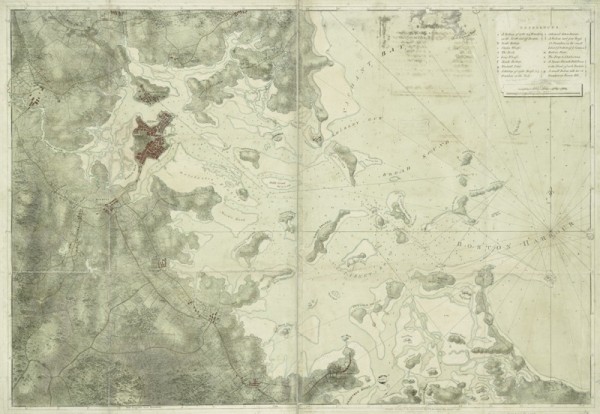
Joseph F. W. Des Barres, A Chart of the Harbour of Boston, 1775. 32 x 48". (Courtesy, Norman B. Leventhal Map Center, Boston Public Library.)
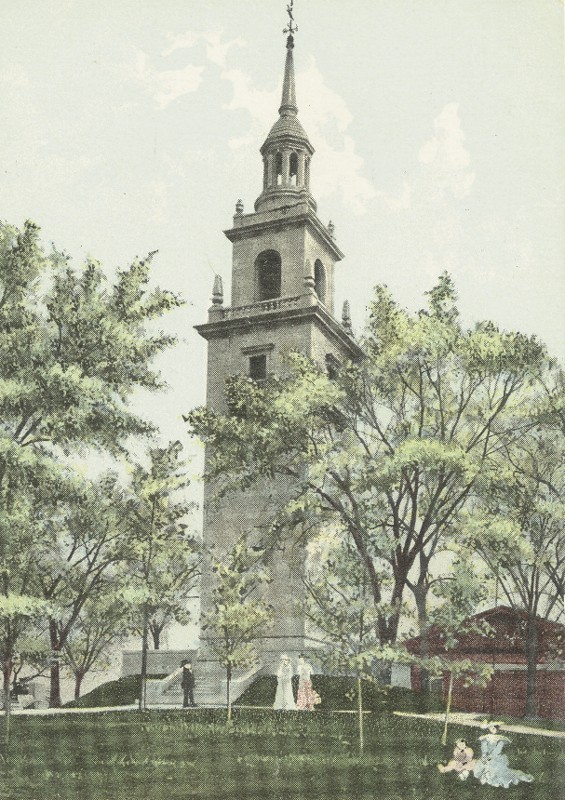
Metropolitan News Co., Boston, Massachusetts, Evacuation Monument, Dorchester Heights, ca. 1901–1907. 3 1/2 x 5 1/2". (Courtesy, Boston Public Library.) The monument commemorated the fortification of Dorchester Heights, which led to the evacuation of British troops from Boston on March 17, 1776.

Pearl and Milk Streets Looking Southwest, After the Fire, November 9–10, 1872. Albumen silver print from glass negative. (Courtesy, Boston Public Library; photo, James Wallace Black.) Residents stand among ruins of downtown Boston after the fire of 1872.
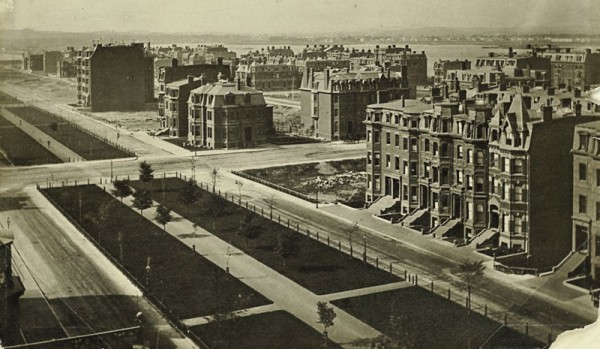
Commonwealth Avenue in Process, ca. 1872. Albumen silver print from glass negative. (Courtesy, Boston Public Library; photographer unknown.) This view is of newly built Victorian row house mansions in the recently created Back Bay neighborhood, formerly a tidal mud flat.
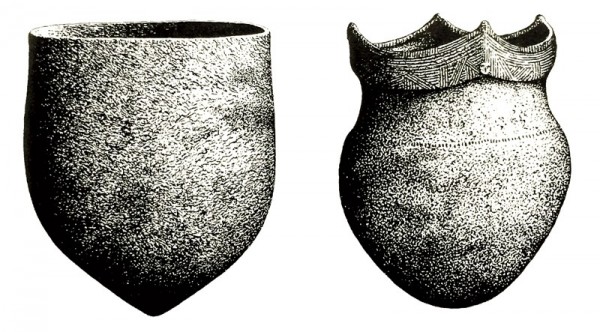
Conjectural drawing of (left) Early Woodland pottery, ca. 3000–2600 BP, and (right) Late Woodland pottery, ca. 1000–400 BP. (Courtesy, Massachusetts Archaeological Society; artwork by William S. Fowler.)
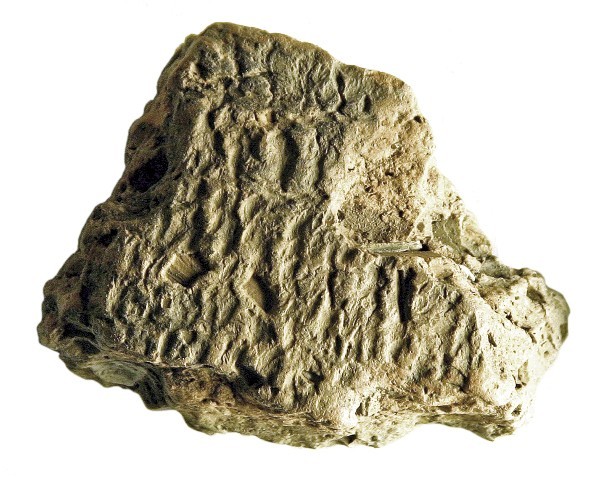
Vessel fragment, 3200–1000 BP, attributed to the Massachusett Native People. Low-fired earthenware. L. 1 7/8". (Courtesy, City of Boston Archaeology; photo, Joseph M. Bagley and Jennifer L. Poulsen.) The fragment was recovered on Boston Common in 1986.
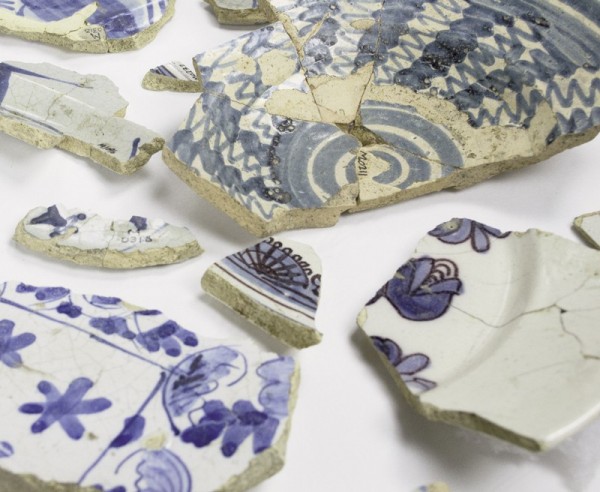
Dish fragments, Portugal, seventeenth century. Tin-glazed earthenware. (Courtesy, City of Boston Archaeology; photo, Joseph M. Bagley and Jennifer L. Poulsen.) All of these fragments were excavated from the James Garrett site.
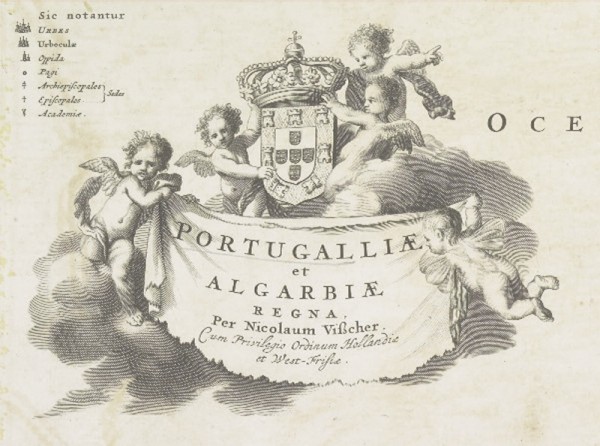
Cartouche detail, from PORTUGALLIÆ et ALGARBIÆ REGNA, Per Nicolaum Visscher. Cum Privilegio Ordinum Hollandiæ et West-Frisiæ [Portugal and the Algarve, by Nicolaes Visscher, with privilege of Holland and West Frisia], 1683–1698. (Courtesy, British Library, London, UK / © British Library Board. All Rights Reserved / Bridgeman Images. Shelfmark Cartographic Items Maps K.Top.74.48.)

Storage jar, Boston, Massachusetts, seventeenth century. Lead-glazed red earthenware. H. 11 3/4". (Courtesy, City of Boston Archaeology; photo, Joseph M. Bagley and Jennifer L. Poulsen.) Only the interior of this jar is glazed.
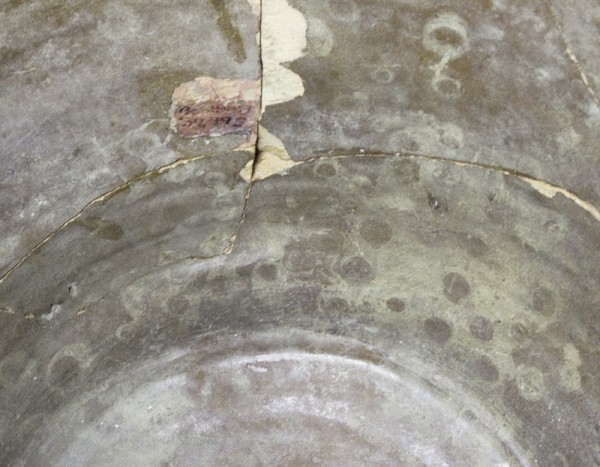
Detail of the glazed interior of the jar illustrated in fig. 9, showing weathering where the cherries were in contact with the vessel walls. (Courtesy, City of Boston Archaeology; photo, Joseph M. Bagley and Jennifer L. Poulsen.)

Sugar cone, likely Boston, Massachusetts, area, ca. 1728. Red earthenware. H. of upper fragment 11", H. of lower fragment 4". (Courtesy, City of Boston Archaeology; photo, Joseph M. Bagley and Jennifer L. Poulsen.) The fragments were recovered from fill deposits at the former Town Dock under Faneuil Hall.
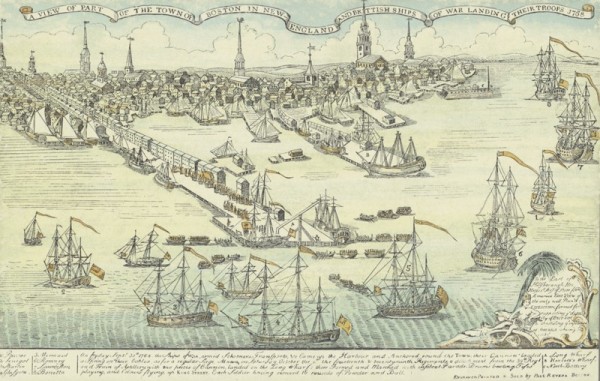
Paul Revere Jr. (1735–1818), A View of Part of the Town of Boston in New-England and Brittish Ships of War Landing Their Troops! 1768, printed 1770 by Alfred L. Sewell, Boston, Massachusetts. Hand-colored engraving. 9 13/16 x 5 9/16", on sheet 10 7/16 x 1515/16". (Courtesy, American Antiquarian Society.) Note Boston’s Long Wharf on the left and the Town Dock on the right.
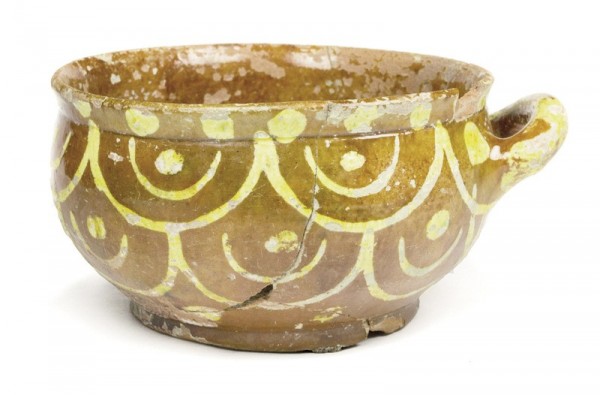
Porringer, attributed to Parker pottery, Boston, Massachusetts, ca. 1742–1754. Lead-glazed, slip-decorated earthenware. D. 5 1/4". (Courtesy, City of Boston Archaeology; photo, Joseph M. Bagley and Jennifer L. Poulsen.)
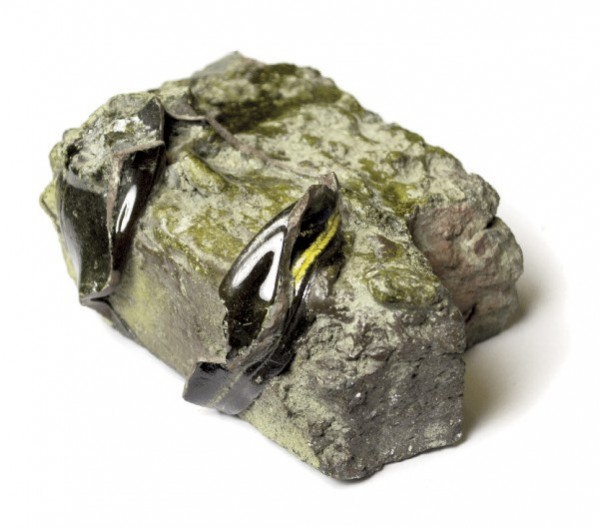
Mug fragment on kiln brick, Boston, Massachusetts, ca. 1714–1754. (Courtesy, City of Boston Archaeology; photo, Joseph M. Bagley and Jennifer L. Poulsen.) This waster was recovered from the Parker Pottery Works site in 1986.
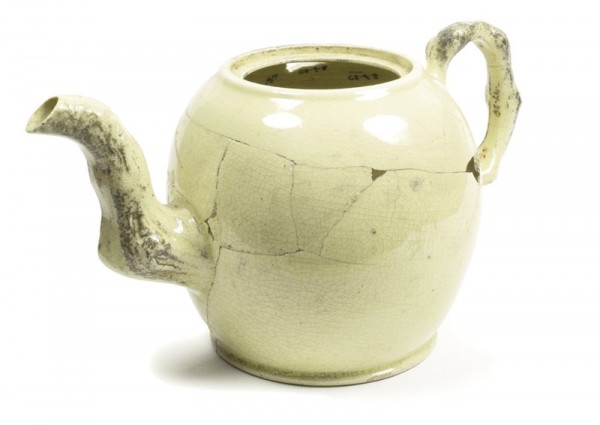
Teapot, probably Staffordshire, England, 1762–1775. Creamware. H. 3 1/2". (Courtesy, City of Boston Archaeology; photo, Joseph M. Bagley and Jennifer L. Poulsen.)

Nathaniel Currier, The Destruction of Tea at Boston Harbor, 1846. Hand-colored lithograph, 7 11/16 x 12 1/2". (Courtesy, Library of Congress.)
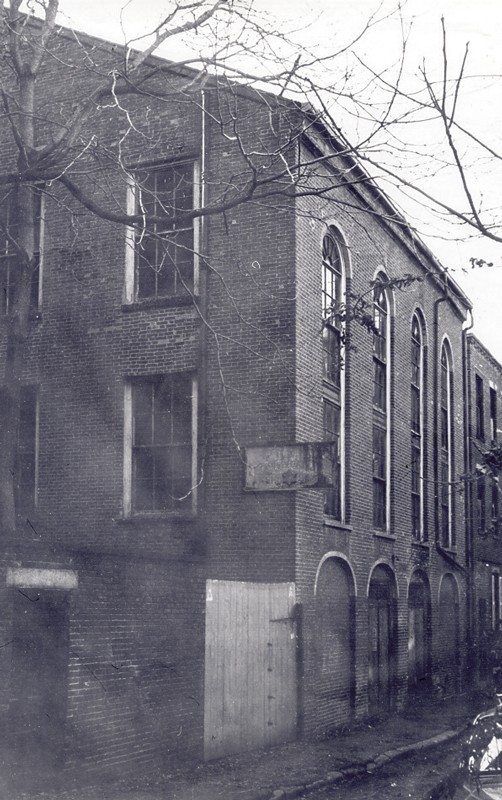
African Meeting House, Boston, Massachusetts, 1972. (Courtesy, City of Boston Archives; photo, Boston Redevelopment Authority.)
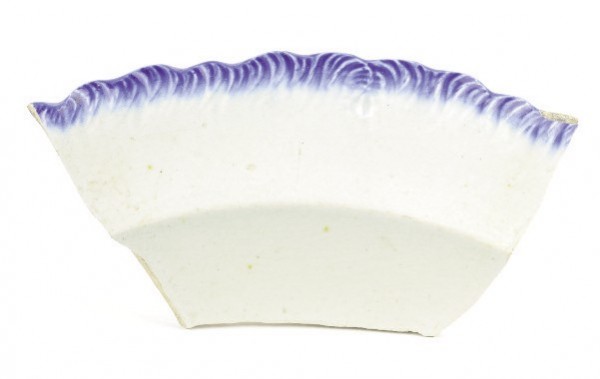
Soup plate, Staffordshire, England, ca. 1806. Pearlware. Extrapolated D. 9". (Courtesy, City of Boston Archaeology; photo, Joseph M. Bagley and Jennifer L. Poulsen.)
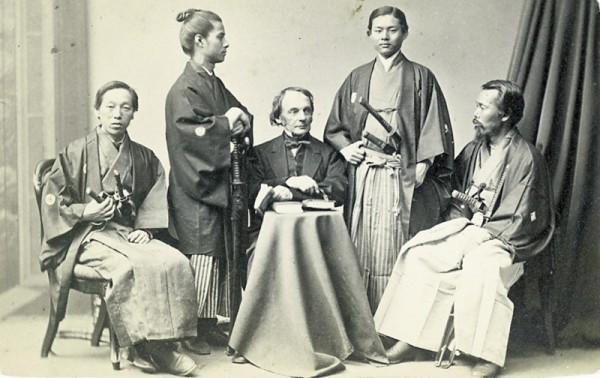
Charles King Dillaway [center] and Japanese students, 1860–ca. 1900. Carte de visite. 2 1/2 x 4 3/16". (Courtesy, Henry and Nancy Rosin Collection of Early Photography of Japan, Freer Gallery of Art and Arthur M. Sackler Gallery Archives, Smithsonian Institution, partial purchase and gift of Henry and Nancy Rosin, 1999–2001; photo, Antoine Sonrel. FSAA1999.35 479)

Vase fragment, Satsuma ware, Japan, ca. 1870. Earthenware with gilded polychromatic enamel overglaze designs. (Courtesy, City of Boston Archaeology; photo, Joseph M. Bagley and Jennifer L. Poulsen.) This type of raised surface decoration is called moriage.

Vase, Satsuma ware, Japan, ca. 1870–1890. Earthenware with gilded polychromatic enamel overglaze designs. H. 12". (Private collection; photo, Robert Hunter.)
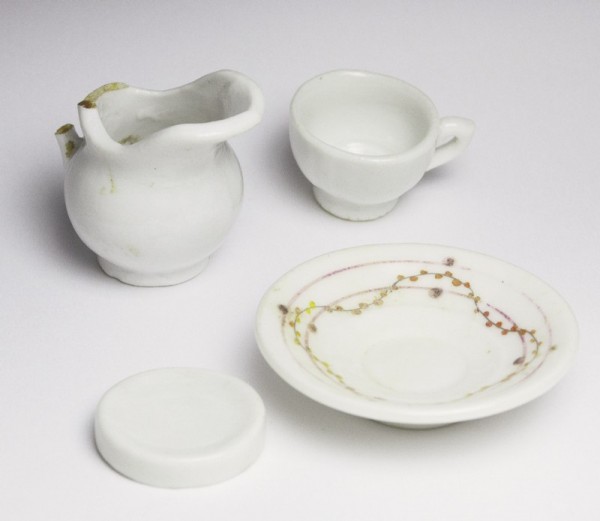
Partial miniature teaset, likely Germany, ca. 1860. Porcelain. H. of cream jug 1 1/2". (Courtesy, City of Boston Archaeology; photo, Joseph M. Bagley and Jennifer L. Poulsen.)
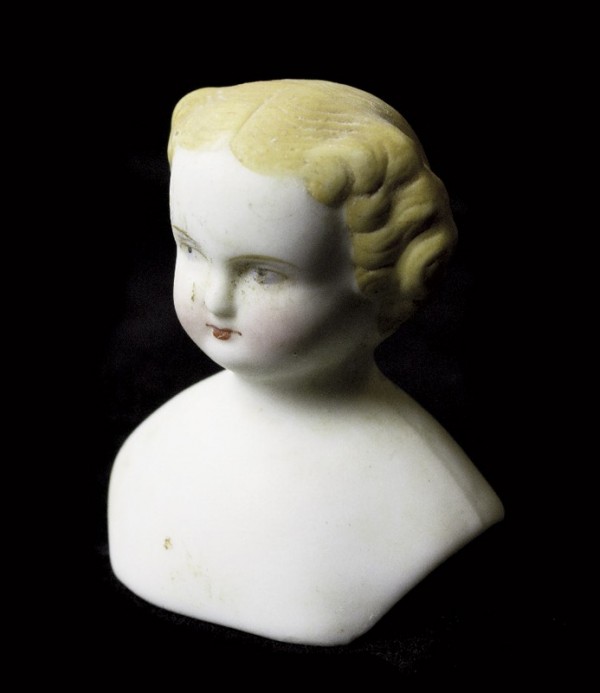
Doll’s head, Germany, ca. 1860. Unglazed porcelain. H. 2 1/4". (Courtesy, City of Boston Archaeology; photo, Joseph M. Bagley and Jennifer L. Poulsen.)
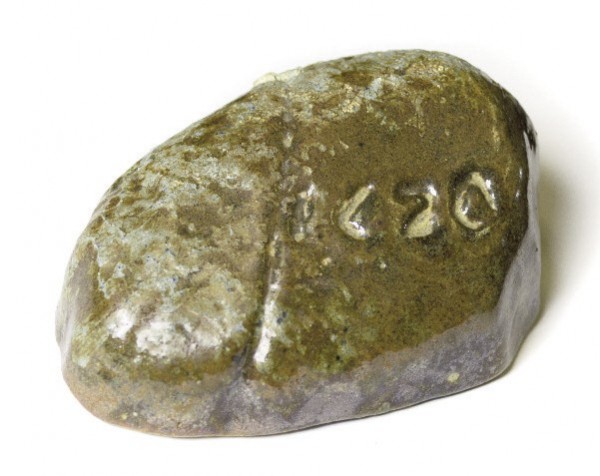
Paperweight, Dorchester Pottery Works, Boston, Massachusetts, early nineteenth century. Stoneware. L. 3 5/8". (Courtesy, City of Boston Archaeology; photo, Joseph M. Bagley and Jennifer L. Poulsen.) The paperweight is inscribed “1620” to commemorate the landing at Plymouth Rock.
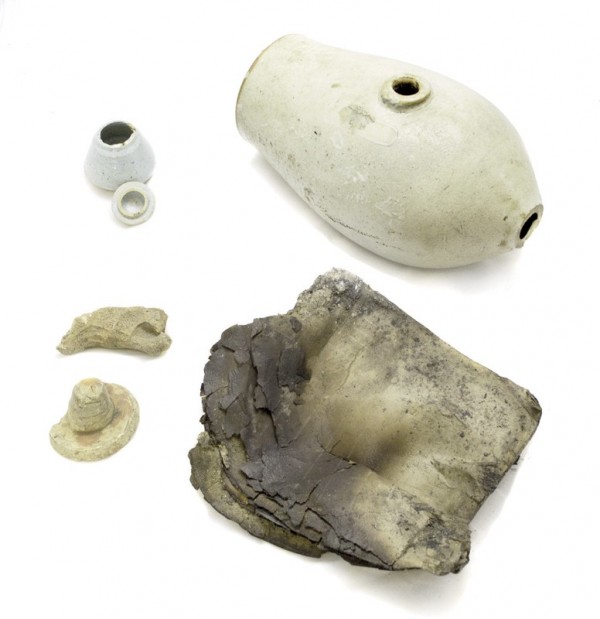
Artifacts recovered from the Dorchester Pottery Works, Boston, Massachusetts, clockwise from top right: Henderson foot-warmer waster, partially burned daybook, two pieces of kiln furniture, and blue-decorated inkwell, early nineteenth century. L. of foot warmer 11". (Courtesy, City of Boston Archaeology; photo, Joseph M. Bagley and Jennifer L. Poulsen.)
